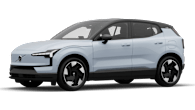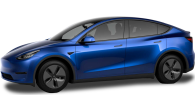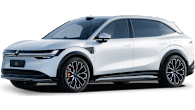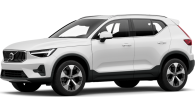Tesla - love the brand, or hate it - has done a lot for the automotive industry. It has made electric cars a talking point, something that competitor companies are finally acting on.
The Tesla Model S sedan, to me, was the vehicle that put Tesla on the map. But does the Model X - a big SUV with up to seven seats - hit the spot for family buyers?
I spent a week in the 2018 Tesla Model X 75D, which happens to be the most affordable version of the US company’s crossover. Affordable? Well, that’s really going to depend on your salary.
Tesla Model X 2018: 75D (75Xb)
| Engine Type | Not Applicable, 0.0L |
|---|---|
| Fuel Type | Electric |
| Fuel Efficiency | 0.0L/100km (combined) |
| Seating | 5 |
| Price From | $50,270 - $57,750 |
Is there anything interesting about its design?
I hate it. I think the rear doors are pretentious and silly. I think the roofline looks wrong. And I think it actually looks more like a bloated hatchback than a ‘real SUV’.
That’s just me, and like everyone I’m entitled to my opinion. I know there are people out there who absolutely love the exterior design of the Model X. If you’re one of them, let me know - I have a great optometrist I can refer you to.
Seriously, though - the Falcon Wing rear doors are design overkill. No-one needs back doors that open up like that, and the amount of compromise that has been built into the rest of the vehicle’s design because of them is noticeable - I couldn’t open the back door on the driver’s side of my test vehicle at home because I was apparently parked too close to the bin - the axis angle at the top of the door limited how far the bottom of the door would open. I can’t understate how rubbish this would be if your home parking space was tight.
.jpg)
Plus this example (and the few I’ve seen/sat in prior) had some issues with quality, like mismatched panel gaps around the doors and hatch. Take a look at our photos to see for yourself.
The massive windscreen stretches to above the front occupants’ heads, and it’s tinted to try and eliminate sunlight overhead - and Tesla has added a mesh shield visor that you can slot in, and although it is welcome, it’s flimsy, and would be easy to knock down when you’re moving the actual (magnetised) sun visors.
Now, as a piece of design, the glass is great - but other vehicles with big glass have smart solutions integrated into them, like the Citroen Grand C4 Picasso, with its pull-down blinds and proper sunvisors.
_0.jpg)
I guess it’s a bit like an architecturally designed house that’s really cool the first time you see it, but really hard to live with. The sunvisors are very thin, and it’s difficult to position them to block the sunlight, especially driving in an easterly direction in the morning (as I do) and a westerly direction in the afternoon (yep, that’s me). Plus, the visors don’t have vanity mirrors - a disaster for makeup artists on the move.
Things I like? The LED headlights and LED daytime running lights are exceptionally good, and the wheels that this model comes with as standard are nice, even if they look a bit dwarfed by the bulk of this slab-sided high-rider.
And if you’ve ever wondered why every Tesla Model X has its rear spoiler in the ‘up’ position at all times, it’s because it’s a fixed spoiler.
.jpg)
How practical is the space inside?
There are good and bad elements to the interior design.
The ingress and egress to the third row is better than some SUVs because the floor is so low - meaning it’s easy to step in and out of - but also worse than some SUVs because the shape of the opening is odd.
Space in the third row is better left for children or small adults with limited legroom and headroom, and while there are vents back there the vision for occupants is limited; the seats are low, and if you’re little you won’t be seeing much.
.jpg)
If the Model X had electric sliding doors rather than the Falcon Wing doors, it would be more practical. If you park in a tight space, a sliding door allows you to still get out, but these doors won’t even open all the way if the sensors detect they are unable to. That’s annoying, because this is a really wide vehicle, and some parking lots seem to be making spaces smaller and smaller.
Anyway, I’m not going to win the battle of sliding vs gullwing doors here, am I?
The boot space is good - with seven seats up you can make use of the hidden compartment below the floor, and with five seats in use the cargo capacity is very good, too. Then there’s the front trunk - no engine means you get bonus storage, and Tesla claims total cargo capacity for the Model X is 2492 litres for the five-seat version.
.jpg)
You can get a five-seat, six-seat or seven-seat version of the Model X. This vehicle used to have electric sliding and folding second-row seats, but now there’s a push-button system, which still uses some form of electrical pulse to unlock the rails below the seats. While it’s quicker than electric would have been, it's not as simple as, say, a lever like you’d find in the Mazda CX-9.
For outboard second-row occupants the space is okay - I set the driver’s seat in my position and had enough legroom and headroom to be comfortable in the second row. But anyone in the third row would have been squished. The middle-row middle-seat of our test car was less than impressive, with little head room and not much width available.
.jpg)
Storage is well sorted up front, with two large centre bottle holders, plus bottle holders in the front doors (none in the rear, for obvious reasons) and a pair of cupholders up front. The storage situation is poor for those in the back: there are no cup receptacles at all for the second row, but there are dual USB ports. In the third row there are two cup holders, and all three rows have air vents.
Does it represent good value for the price? What features does it come with?
How much is a Tesla Model X? It isn’t cheap, that’s for sure. But this 75D version is currently the lowest cost model in the brand’s SUV price range.
The price of the 75D kicks off at $125,000 plus on-road costs, or $142,475 drive away - but where you live will determine the drive-away price, because different states and territories have different stamp-duty implications for electric cars. ACT buyers ($142,475 RRP) get a much better dealer than those in WA ($151,174 RRP), for instance.
Pricing jumps significantly if you want the more performance-focused 100D, which also gains extra battery range (prices from $173,805 drive away) or the flagship P100D we tested recently (from $247,385). That’s right - the Model X we have is more than a hundred grand cheaper than the top model.
The Model X comes pretty well equipped from the factory, with a 17.0-inch touchscreen media display featuring Google Maps sat nav with realtime traffic updates, Bluetooth phone and audio streaming, digital DAB radio and integrated TuneIn app connectivity. There's no Apple CarPlay or Android Auto, though.
.jpg)
Other standard items include keyless entry and a self-opening (and self-closing) driver’s door, an electric tailgate, interior ambient lighting, air suspension with ride height adjustment, auto headlights with auto high-beam lights, LED fog lights, power adjustable and auto-folding heated auto-dimming side mirrors. You get 20-inch wheels as standard, but there's no spare wheel - tyre-pressure monitoring is fitted, and if you get a flat, you'll need to call roadside assist.
There are standard heated seats for every occupant and there’s a heated steering wheel, heated windscreen washer nozzles to help defrost if you’re heading to the snow, and if you download the app you can adjust the temperature inside the car remotely - cold starts on winter mornings are a thing of the past.
_0.jpg)
The app also allows you to monitor the vehicle’s state of charge, enable someone else to drive your car without the keys present (you just have to input your password in the app), and you can unlock/lock the car and/or open the front or rear trunks, start it, honk the horn, flash the lights, set the speed limit or enable ‘valet mode’, so those pesky parking attendants don’t go using all your juice doing speedy starts.
How many seats in the Tesla Model X? Well, you can have it with five seats as standard, six seats for an additional $8300 (with or without a rear centre console) or seven seats for $4100.
Other options fitted to our vehicle included grey painted 20-inch wheels (as opposed to the silver rims you get on the standard version: $2800), the White Premium interior pack ($4600) and the carbon-fibre upgrade ($350), Deep Blue metallic paint ($2100) and the Enhanced Autopilot system ($6900).
.jpg)
So, in the end, our affordable Model X cost more than $175,000 on the road… ouch. You can get any one of a number of petrol or diesel SUVs from competitor luxury brands for less money, and plenty with plug-in practicality, too.
If you want a luxury plug-in hybrid SUV, consider the Volvo XC90 T8 plug-in hybrid from $122,900, or a Porsche Cayenne e-Hybrid from $135,600, or the Mercedes-Benz GLE500e for $129,500, or the Audi Q7 e-tron from $139,900, or the BMW X5 xDrive40e from $124,990.
Admittedly, none are full EVs, but the Audi e-tron model is due next year…
You should also be aware of the wait time associated with a Tesla - the vehicles are built to personal specifications, so unless you’re buying a second-hand car, or a demo from the company’s (small!) stock list, it could mean a wait time of about three months. The Tesla web configurator allows you to get an idea of approximate delivery dates. Some buyers will take that with a grain of salt, though, given customers have waited about two years for their Model 3s.
If you don’t want to wear the depreciation, you could consider a used car - there are pre-owned Model X and Model S examples on Tesla’s website.
What are the key stats for the engine and transmission?
Not so much an engine, but a 75kWh battery pack with a claimed 210km/h top speed and a 0-100 claim of 5.2 seconds. The claimed driving range for the Tesla Model X 75D is 417 kilometres. You don’t have gears to play with - Tesla’s run a single-speed transaxle, but the stalk to control it is sourced from Mercedes-Benz.
Remember, this isn’t the ‘fast’ Model X. But the D in the name signifies that it has Tesla’s dual-motor all-wheel drive system, ensuring excellent traction for super-quick acceleration.
As you might expect, stepping up to the Model X 100D with a 100kWh battery pack and dual motors increases the performance considerably (0-100: 4.9sec; 250km/h top speed), and also adds more electric driving range (565km claimed).
Go all out on the P100D and apparently your Model X will do 0-100 in 3.1sec, thanks to the addition of Ludicrous Mode, but the battery range drops away slightly (542km). Tesla says it’s the quickest SUV in history - and even in 75D guise it’s pretty rapid.
Every Tesla Model X is prepped for towing, too - the towing capacity is rated at 750kg for an un-braked trailer, and 2250kg for a braked trailer. The tare mass for the Model X is 2352 kilograms.
How much fuel does it consume?
None. Well, it consumes electricity, so if you’re getting your energy from green sources, you can drive carbon-neutral in the Model X.
As mentioned above, a full charge will get a claimed 417km. On test, we picked the Model X up will a full ‘tank’, and got it down to 7 per cent remaining over about 400km - so the claim is pretty truthful.
But yes, I got range anxiety, and yes, I Googled “how long does it take to charge a Tesla Model X?”
The charge time really depends where you do it. If you go to a Supercharger - Tesla’s network of high-amperage, big power output (up to 120kW per car) fast-charge stations, you can expect to get to 80 per cent from empty in about 45 minutes, or all the way to full in a bit more than an hour. It used to be free to recharge at Superchargers, then increased demand saw Tesla introduce a pay-per-use fee, but all Tesla owners get 400kWh of credits to use every year.
.jpg)
If you charge at a destination charger like I did, the results are far, far worse. I parked up at the Supercheap Auto Penrith charge point, which is capable of up to 22kW’ of power output at just 6 amps, and left the car there for a full business day. It started at 7 per cent, and when I got back, it was at 53 per cent.
These destination chargers make sense if you’re going away for the weekend and can leave the car plugged in while you relax at the resort, but you need to know they’re not Superchargers. The network of Superchargers is getting bigger and bigger, and theoretically you can drive from Adelaide to Brisbane using them now.
Every Tesla comes with a wall connector for you to install at home, but there are options for how powerful it can be, and can be “tailored to your home’s supply” - be it three-phase or single-phase. On single-phase power, the output can be 16, 20, 24 or 32 amps. According to Tesla’s Australian site, 16-amp three-phase power will charge at a rate of about 50km per hour, while at 24-amp you could see 80km per hour added (meaning about five hours to fully charge in this spec).
.jpg)
If you want the specs and figures, our Model X had used 136kWh over the total 507km of its life to date, at an average of 269Wh/km. So, if your energy company bills you $0.22 per kWh, it’ll cost you about $30 to do 500km. Not exactly cheap, but you’re not buying a Tesla to save money - and if you have a good home solar array setup, you should be able to run your house and your car at no extra cost.
And Tesla has a deal with AGL so you can charge your car for $1 per day. That means you can theoretically fill it up every evening with energy, and you won’t spend more than $365 for a year of driving.
So, the Model X gets a 10 out of 10 for fuel consumption. But if these ratings included a ‘time-consumption’ figure, it would be a lot less!
What's it like to drive?
With two electric motors and a huge bank of lithium-ion batteries to work with, the acceleration of the Model X is impressive. Throttle response is good, and from a standing start you will still impress your friends - even if you don’t buy the Ludicrous version.
On-the-move acceleration is good, too, because there’s no transmission or turbo lag as you’d find in any of the Model X’s natural competitors. It’s quick, and even if you’re driving it sedately it’s nice to know there’s power in reserve if you need it.
It is a heavy vehicle, but the weight is mainly down low, with Tesla’s skateboard battery platform between the axles making it feel suctioned to the ground. The 20-inch rims with Michelin rubber (255/45 front, 275/45 rear) offer tremendous grip, and the traction is better than you’d likely find in other, more traditional SUVs.
The air suspension does a decent job of cosseting those in the cabin from the road surface below, provided it’s smooth. Some shortcomings are noticeable over sharp edges, such as speed humps, where it can feel a bit stiff-legged, and there’s the typical side-to-side wallow you see from airbag suspension.
The electric steering system offers nice accuracy and response, with a linear weighting that means it’s easy to turn the wheel, whether you’re pushing it through corners or simply trying to park it at the shops.
Some things that could be better? The visibility is the biggest issue, for me. This is a big vehicle, and the rear-view mirror is tiny, as is the vision it offers. If you have people in the third row, there’s almost no point even trying to use it.
I used the Enhanced Autopilot system on my commute, and it worked very well, you just need to ensure there’s some pressure on the steering wheel. This isn’t a full autopilot system, and shouldn’t be treated as such: you need to maintain control of the car and be conscious of your surroundings, because it isn’t perfect, and if you disobey its commands to ‘keep light pressure on the wheel’, it will disable for the rest of your drive.
I was surprised there wasn’t a surround-view camera system fitted to this car, especially given there are so many driving-system cameras and radars fitted.
Other concerns? The creaking and groaning of the body and the rubbers as you turn corners, particularly over offset low-speed bends in car parks and the like. This isn’t the sort of thing you hear in the established luxury SUVs.
And of course, if you’re getting a Tesla, spend the money and get the best home-charging solution you can. It’ll put your mind at ease. Or just move close to a Supercharger.
Warranty & Safety Rating
What safety equipment is fitted? What safety rating?
There is no ANCAP or Euro NCAP crash test rating for the Tesla Model X, but the vehicle scored extremely well in NHTSA testing the US, scoring the highest rating in history for any SUV.
The Model X sold in Australia gets an array of safety gear, including a collision-warning system and autonomous emergency braking, a reversing camera and parking sensors front and rear, plus there are airbags for first and second row occupants, but no curtain airbag coverage for those in the rear row.
Models fitted with Enhanced Autopilot (which will be all of them, we reckon) have four cameras and 12 ultrasonic sensors that monitor the road and the vehicle’s surroundings. Engaging autopilot means the car works to maintain the vehicle’s line in a lane of traffic, it can change lanes at the tap of the indicator stalk (thus letting the car do the blind-spot checking for you), and it can adjust speed to mimic other road users. It slows to a complete stop, and will take off again when things get moving once more.
In better news for parents, there are ISOFIX child seat anchor points in four of the five rear seats, plus top-tether attachments for all five rear seats - so baby capsules shouldn’t be an issue.
What does it cost to own? What warranty is offered?
Tesla offers a strong eight-year/160,000km warranty for the vehicle, and the warranty extends to unlimited kilometres for the drivetrain.
The company asks owners to service their Model X (or Model S) every 12 months or 20,000km, whichever occurs soonest. And with few moving parts, you’d expect service costs to be pretty low - however, there is no capped-price-servicing plan.
Considering a Tesla? Make sure you check out our Tesla problems page to read up on any issues, faults, common problems and complaints or defects and recalls issued.
Verdict
The Tesla Model X in 75D specification offers a lot of technology for buyers who want to dip their well-heeled toe all the way into the electric mobility pool. There are more conservative and compelling options for customers who think plug-in hybrids are the first step, though - and if you’re not hellbent on a full EV, then we’d suggest maybe you have a bit of a look at what else is on offer.
Could you live with an electric car? Tell us what you think in the comments section below.
Range and Specs
| Vehicle | Specs | Price* |
|---|---|---|
| 100D (100Xb) | Electric, 1 SPEED AUTOMATIC | $86,130 - $99,000 |
| 75D (75Xb) | Electric, 1 SPEED AUTOMATIC | $74,580 - $85,690 |
| 90D (90XB) | Electric, 1 SPEED AUTOMATIC | $133,980 - $154,000 |







.jpg)
.jpg)
.jpg)
.jpg)
.jpg)
.jpg)
.jpg)
.jpg)
.jpg)
.jpg)
.jpg)
.png)








.png)




.png)















.jpg)
